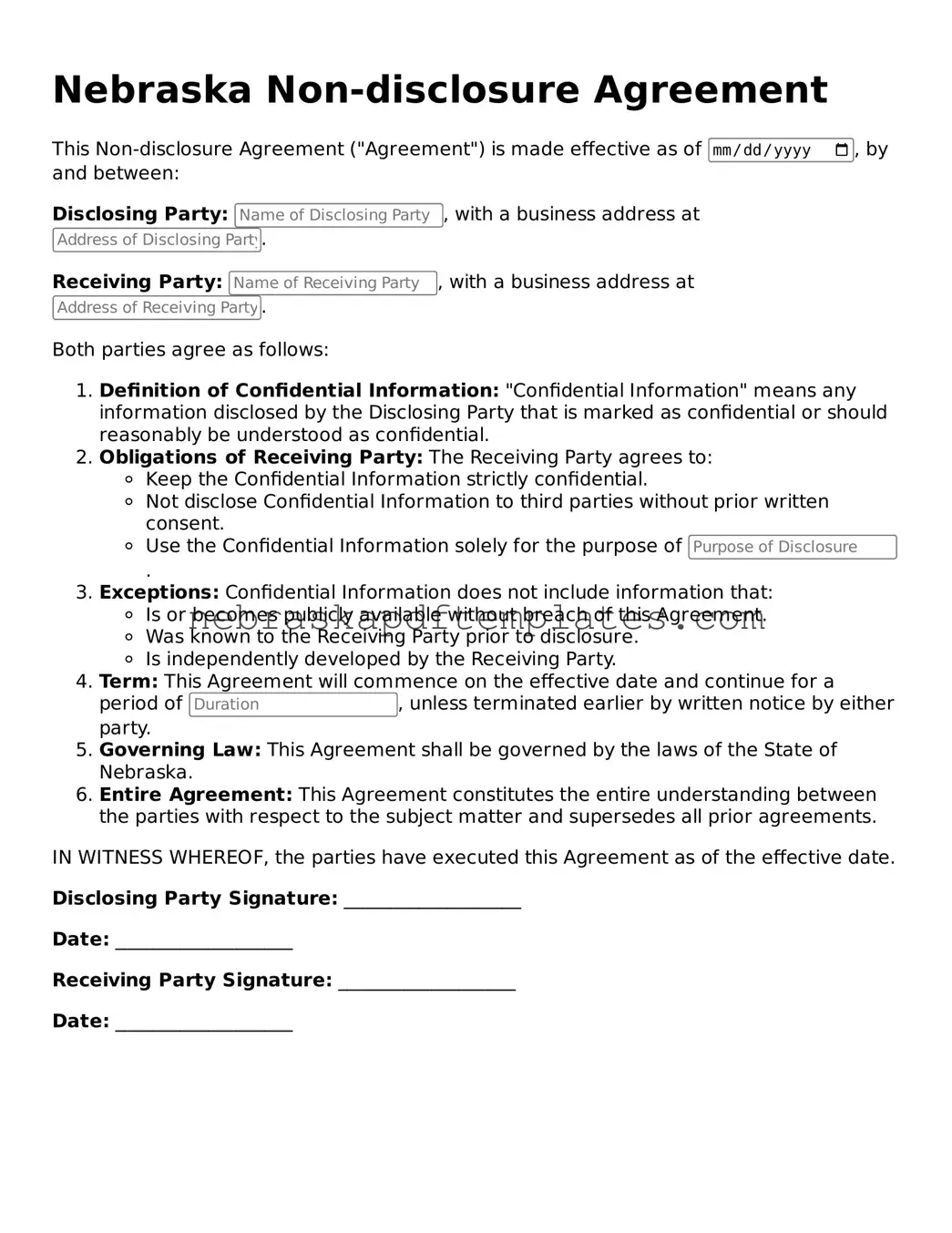What is a Non-disclosure Agreement (NDA) in Nebraska?
A Non-disclosure Agreement (NDA) in Nebraska is a legal contract designed to protect confidential information shared between parties. It establishes a mutual understanding that certain information will not be disclosed to others. NDAs are commonly used in business settings, particularly when sensitive information, such as trade secrets or proprietary data, is shared during negotiations or collaborations.
When should I use a Non-disclosure Agreement?
You should consider using an NDA in several situations, including:
-
When discussing potential business partnerships or joint ventures.
-
When sharing proprietary information with employees or contractors.
-
When revealing sensitive information to investors or potential buyers.
Using an NDA helps ensure that the information remains confidential and protects your interests.
What should be included in a Nebraska Non-disclosure Agreement?
A well-drafted NDA should include the following key elements:
-
Definition of Confidential Information:
Clearly outline what constitutes confidential information.
-
Obligations of the Receiving Party:
Specify the responsibilities of the party receiving the information.
-
Duration of Confidentiality:
Indicate how long the information must remain confidential.
-
Permitted Disclosures:
Describe any circumstances under which disclosure is allowed, such as legal obligations.
-
Consequences of Breach:
Outline the potential penalties for violating the NDA.
How long does a Non-disclosure Agreement last?
The duration of an NDA can vary based on the agreement between the parties. Typically, confidentiality obligations can last anywhere from a few years to indefinitely. It’s essential to clearly define the time frame in the NDA to avoid any confusion in the future.
Can an NDA be enforced in Nebraska?
Yes, NDAs can be enforced in Nebraska, provided they meet certain legal requirements. For an NDA to be enforceable, it must be reasonable in scope, duration, and purpose. Courts generally uphold NDAs that protect legitimate business interests and do not impose undue restrictions on the parties involved.
What happens if someone breaches the Non-disclosure Agreement?
If a party breaches the NDA, the injured party may pursue legal action for damages. The consequences of a breach can include:
-
Monetary damages for losses incurred.
-
Injunctions to prevent further disclosure.
-
Legal fees and costs associated with enforcing the NDA.
It's crucial to take any potential breach seriously and consult with legal professionals to determine the best course of action.
